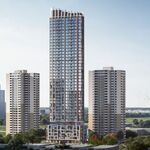DSCToronto
Superstar
Member Bio
- Joined
- Jan 13, 2008
- Messages
- 20,099
- Reaction score
- 29,531
- Location
- St Lawrence Market Area
City of Toronto Media Relations has issued the following:
==========================================
Media Advisory
February 8, 2024
Tomorrow, Mayor Olivia Chow, Deputy Mayor Ausma Malik and Councillor Chris Moise will give an update on the City of Toronto’s actions to enhance transit service and improve traffic management along the King Street.
Date: Friday, February 9
Time: 12:45 p.m.
Location: Intersection of King Street and University Avenue, northwest corner
King Street is the TTC’s busiest surface transit route in the city, moving more than 72,000 riders on an average weekday. The King Street Transit Priority Corridor between Bathurst Street and Jarvis Street puts people and transit first and improves transit reliability, speed and capacity.
The King Street Transit Pilot launched in 2017. In 2019, City Council made King Street a permanent Transit Priority Corridor, giving priority to street cars and restricting motor traffic at most intersections, with exceptions for local access.
Since December 2023, the City of Toronto has deployed traffic agents at major intersections along King Street during rush hours to enforce the Transit Priority Corridor.
==========================================
Media Advisory
February 8, 2024
Tomorrow, Mayor Olivia Chow, Deputy Mayor Ausma Malik and Councillor Chris Moise will give an update on the City of Toronto’s actions to enhance transit service and improve traffic management along the King Street.
Date: Friday, February 9
Time: 12:45 p.m.
Location: Intersection of King Street and University Avenue, northwest corner
King Street is the TTC’s busiest surface transit route in the city, moving more than 72,000 riders on an average weekday. The King Street Transit Priority Corridor between Bathurst Street and Jarvis Street puts people and transit first and improves transit reliability, speed and capacity.
The King Street Transit Pilot launched in 2017. In 2019, City Council made King Street a permanent Transit Priority Corridor, giving priority to street cars and restricting motor traffic at most intersections, with exceptions for local access.
Since December 2023, the City of Toronto has deployed traffic agents at major intersections along King Street during rush hours to enforce the Transit Priority Corridor.




